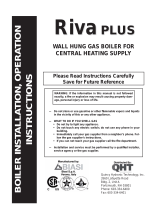
Environmental specifications
Table 7: Environmental specifications
Environmental feature Specification
Ambient temperature 0° F to 140° F or -18° C to 60° C
Installation procedure
Before you begin:
Read complete guidebook and all installation procedures prior to installation.
1. Unpack the valve from the shipping container in the area where it will be mounted and verify
that the tag number on the valve matches schedule.
Note: Never carry a valve by the linkage, cone bracket, or any other control component
that is mounted onto or into the valve body. The central cone shaft extends out of the
valve body outlet opening when in its full open position. Do not stand a Venturi Valve on
outlet opening side when it is in the full open position.
2. Verify the size, flow range and orientation of the valve by comparing the data on the valve
label to the specifications listed on the schedule or architectural drawings.
Note: Valve O.D. dimensions are sized to fit inside standard spiral and flexible duct.
3. Install all pressure independent valves horizontally or vertically based on submittals,
drawings and specifications.
Note: Horizontal, Vertical Up and Vertical Down Valves cannot be interchanged or
substituted for each other.
4. Make sure to install valve so that air flow direction corresponds to the arrow on valve, for
example, from short cylindrical section to longer cylindrical section. To verify the cone
direction, check the label on the valve and compare the arrow on the label to the direction of
cone. The cone moves freely forward and back in the direction that the arrow points.
5. Before you mount the valve to the ductwork, verify the direction of flow within the duct and
align the valve accordingly.
6. Install a hanger stock to support the ductwork within 12 in. (305 mm) of the valve connection.
Install valve into duct after hanger stock is in place.
Note: To ensure precise operation, ensure the valve is level after mounting.
Note: Allow a minimum of 14 in. (356 mm) of free unobstructed space around the
valve for access. Do not mount the valve with the actuator fully down as potential
condensation can run into the actuator. The actuator and linkage position is not affected
whether it is up, down or sideways. However, for future maintenance, adjustment or
potential condensation issues it is recommended that the linkage is not positioned
facing down.
Note: It is recommended that single body horizontal hood valves should be installed
so that the pivot arm is located at the 3 and 9 o’clock position. Never mount the pivot
arm at the 12 or 6 o’clock position. It is also recommended that the valve should be
installed to allow for the best access to the actuator or linkage in the event that future
adjustments are required.
15Venturi Valve Installation Instructions























